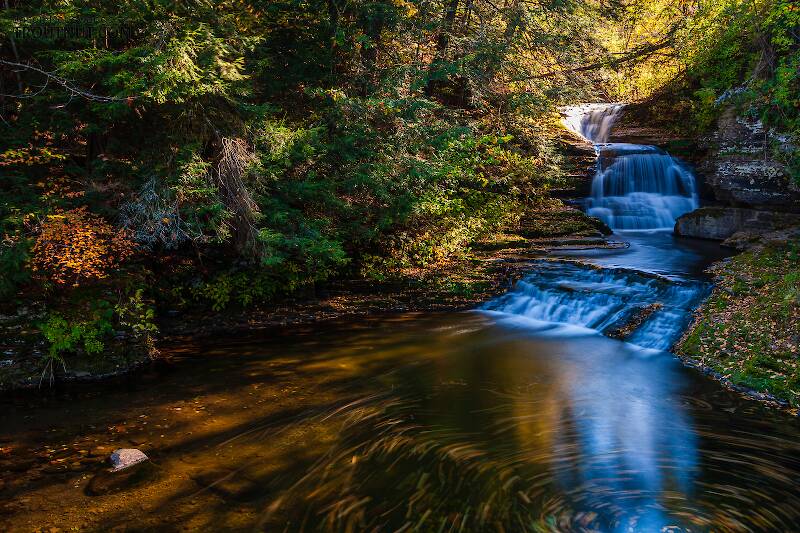
Salmonflies
Pteronarcys californica
The giant Salmonflies of the Western mountains are legendary for their proclivity to elicit consistent dry-fly action and ferocious strikes.
Featured on the forum

This wild-looking little thing completely puzzled me. At first I was thinking beetle or month larva, until I got a look at the pictures on the computer screen. I made a couple of incorrect guesses before entomologist Greg Courtney pointed me in the right direction with Psychodidae. He suggested a possible genus of Thornburghiella, but could not rule out some other members of the tribe Pericomini.

Troutnut is a project started in 2003 by salmonid ecologist Jason "Troutnut" Neuswanger to help anglers and
fly tyers unabashedly embrace the entomological side of the sport. Learn more about Troutnut or
support the project for an enhanced experience here.
Ephemera simulans (Brown Drake) Mayfly Nymph Pictures
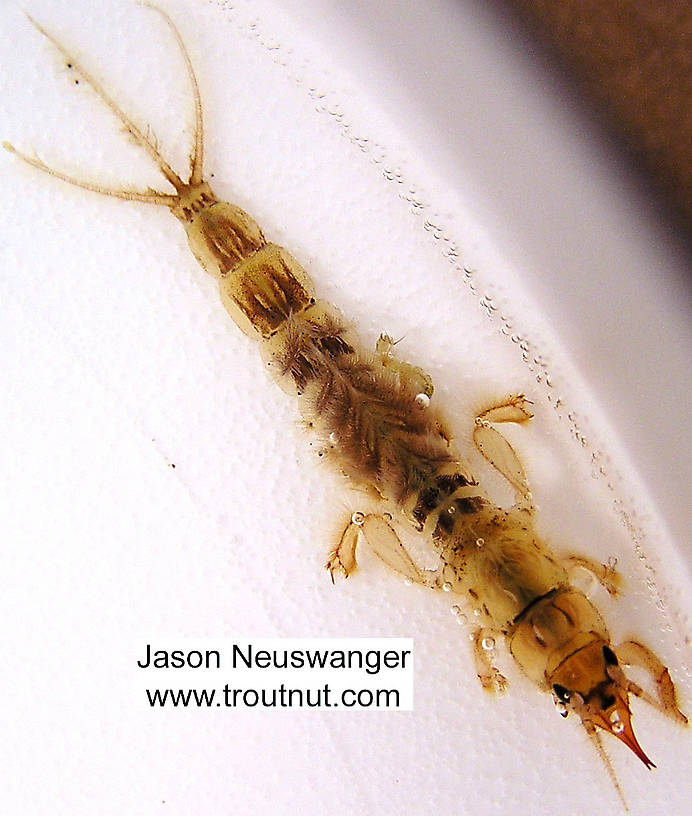
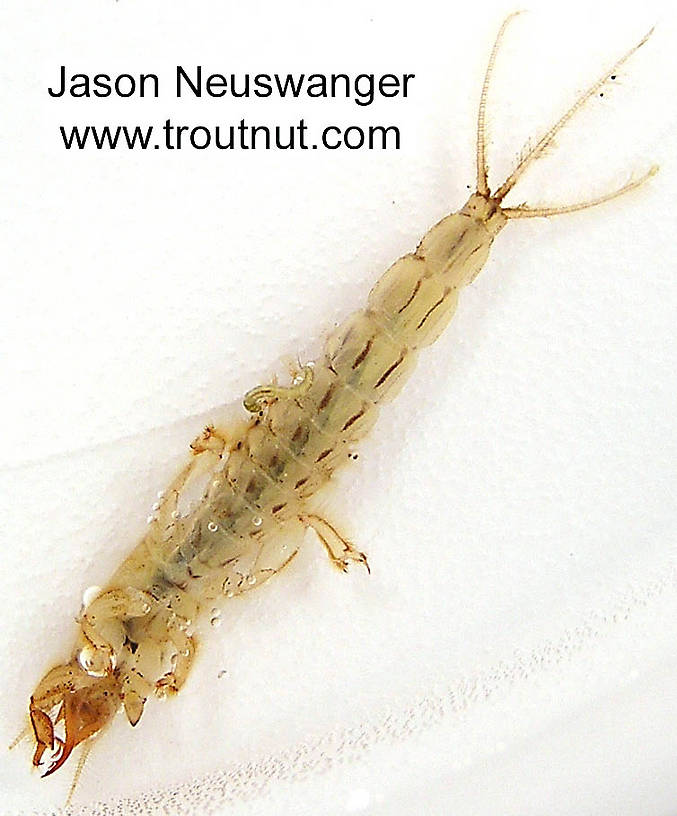
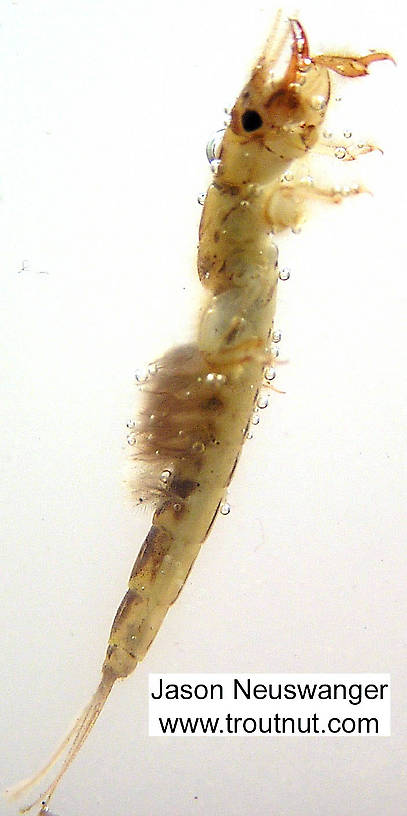

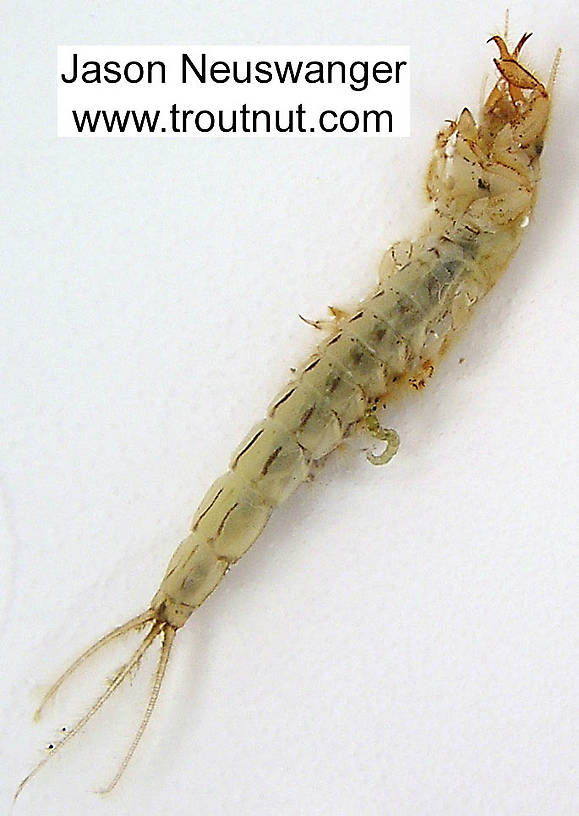
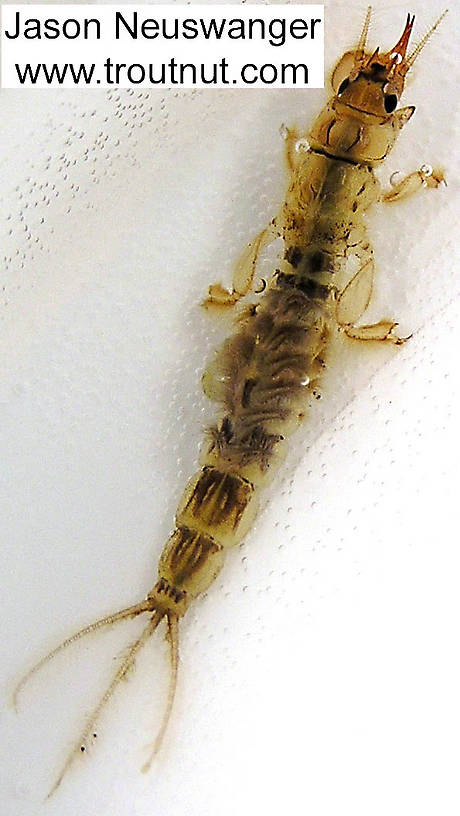
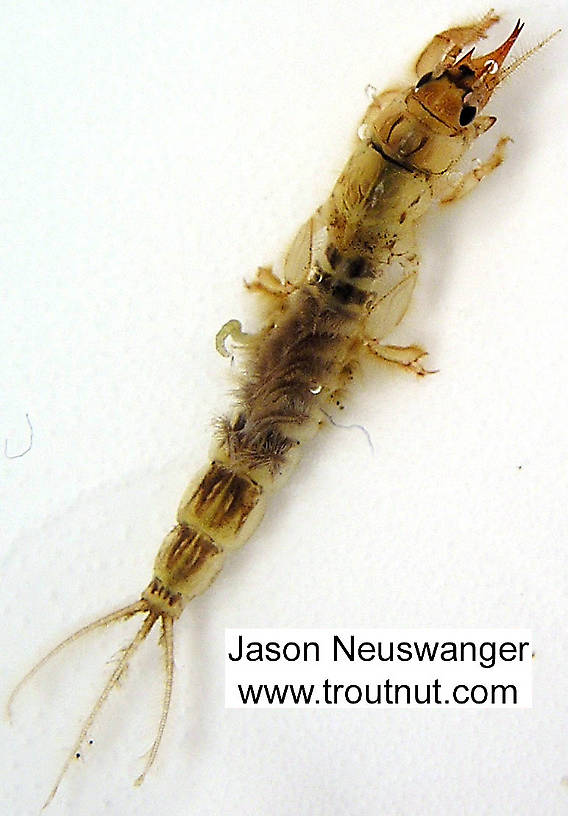
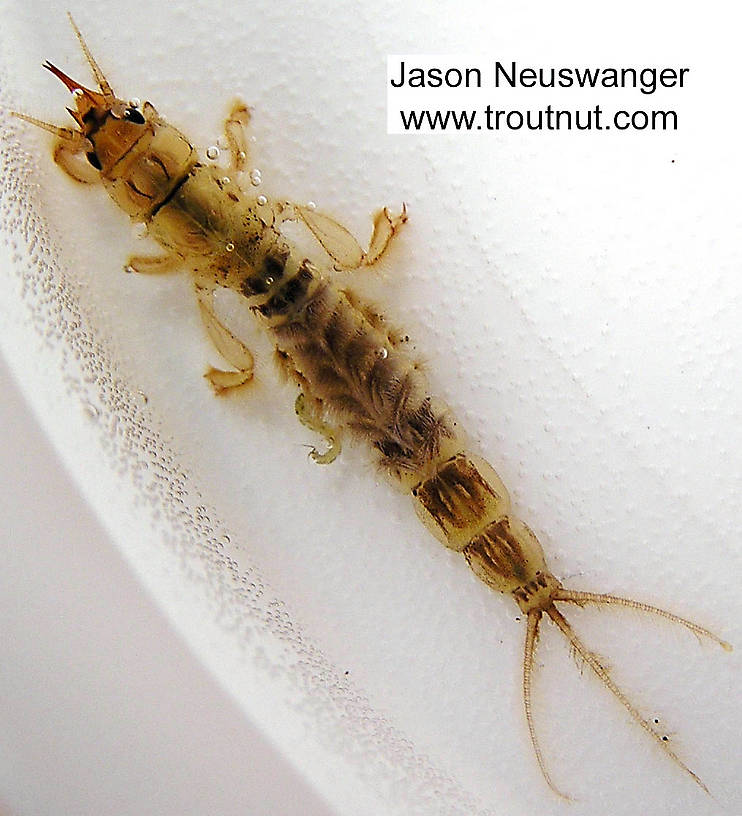
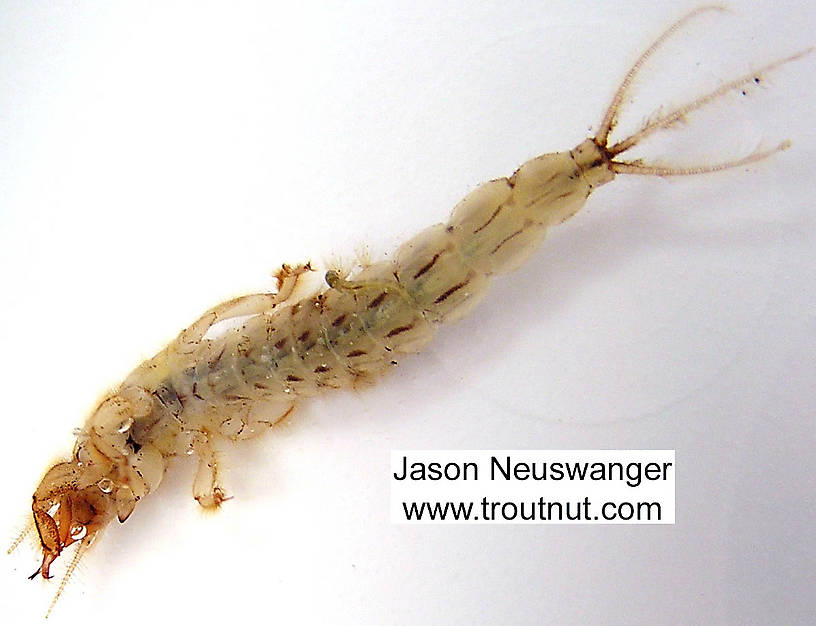

Video Clip
Ephemera 1
Featuring: Ephemera simulans Mayfly Nymph
This mayfly was collected from the Namekagon River in Wisconsin on January 31st, 2004 and added to Troutnut.com by Troutnut on January 25th, 2006.
Discussions of this Nymph
Nice pictures of accompanying Epoicocladius sp. larvae
3 replies
Posted by Beardius on Aug 1, 2008
Last reply on Aug 8, 2008 by Beardius
Several of these pictures show larvae of the midge Epoicocladius (Diptera: Churonomidae: Orthocladiinae) attached to the gills of the nymph. This species is an obligate commensal that feeds on organic material that accumulates on hair tufts at the base of the gills. They are almost always present where burrowing mayflies are present in large numbers. Different species of Epoicocladius are found on Ephemera spp., Hexagenia spp., and Litobrancha sp.
Start a Discussion of Nymph
Ephemera simulans (Brown Drake) Mayfly Nymph Pictures
Collection details
Location: Namekagon River, Wisconsin
Date: January 31st, 2004
Added to site: January 25th, 2006
Author: Troutnut
Date: January 31st, 2004
Added to site: January 25th, 2006
Author: Troutnut

